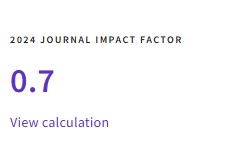Exploring break point dynamics: a preliminary performance analysis in men's professional tennis
DOI:
https://doi.org/10.24310/riccafd.13.3.2024.20053Keywords:
deportes de raqueta, rendimiento, táctica, élite, Grand SlamAbstract
This study investigated the differences between break points (BP) and non-break points (NPB) in men's professional tennis. A total of 2,872 points from 10 matches of the US Open 2021 were analysed. The number of strokes per rally was higher in PB than in NPB (4.18 vs 3.57 shots, p=.002), as was rally duration (5.88 vs 5.03 seconds, p=.003) and stroke frequency (1.13 vs 1.08 shots/second, p=.001). Analysis of the distribution, based on a power law relationship, revealed that short rallies (0-4 shots) predominated in both conditions (72.4% of points). First serves contributed to a higher percentage of points won by the server for PB and NPB. However, this percentage was lower for second serves. These results could help coaches to prepare players to make tactical decisions during important points.
Downloads
Metrics
References
Hughes, M., & Franks, I. The essentials of performance analysis: an introduction. Routledge. 2007.
Martínez-Gallego, R., Gumán, J.F., James, N., Pers, J., Ramon-Llin, J., & Vuckovic, G. Movement characteristics of elite tennis player son hard courts with respet to the direction of ground strokes. J Sports Sci Med. 2013; 10: 275– 281. https://www.ncbi.nlm.nih.gov/pmc/articles/PMC3761832/
Kovalchik, S.A., & Reid, M. Measuring clutch performance in professional tennis. Statistica Applicata-Italian Journal of Applied Statistics 2018; 30: 255-268. https://doi.org/10.26398/IJAS.0030-011
Knight, G., & O’Donoghue, P. The probability of winning break points in Grand Slam men’s single tennis. Euro J Sport Sci. 2012: 12: 462-468. https://doi.org/10.1080/17461391.2011.577239
Ma, S.M., Liu, C.C., Tan, Y., & Ma, S. C. Winning matches in Grand Slam men's singles: An analysis of player performance-related variables from 1991 to 2008. J Sports Sci. 2013; 31: 1147–1155. https://doi.org/10.1080/02640414.2013.775472
O’Donoghue, P. Break points in Grand Slam men’s singles tennis. Int J Perform Anal Sport, 2012; 12: 156-165. https://doi.org/10.1080/24648668.2012.11868591
Meffert, D., O’Shannessy, C., Born, P., Grambow, R., & Vogt, T. Tennis serve performances at break points: Approaching practice patterns for coaching. Euro J Sport Sci. 2018; 18: 1151-1157. https://doi.org/10.1080/17461391.2018.1490821
Torres-Luque, G., Sánchez-Pay, A., Fernández-García, Á.I., & Palao, J.M Características de la estructura temporal en tenis. Una revisión. [Characteristics of the temporal structure in tennis. A review]. J Sport Health Res. 2014; 6:117-128.
Fernandez, J., Mendez-Villanueva, A., & Pluim, B. Intensity of tennis match play. British J Sports Med. 2006; 40: 387-391.
Ato, M., López-García, J.J., & Benavente, A. A classification system for research designs in psychology. Anales de Psicología. 2013; 29: 1038–1059.
Fitzpatrick, A., Stone, J. A., Choppin, S., & Kelley, J. Investigating the most important aspect of elite grass court tennis: Short points. Int J Sports Sci Coach. 2021; 16: 1178-1186. https://doi.org/10.1177/1747954121999593
Soto, A., Camerino, O., Iglesias, X., Anguera, M. T., & Castañer, M. LINCE PLUS: Research software for behavior video analysis [LINCE PLUS: Research software for behavioral video analysis]. Apunt Educ Fís y Deportes 2019: 137: 149–153.
Altman, D. Practical Statistics for Medical Research (Book Review). Sexualities 1991; 6: 3-4.
Field, A. Discovering statistics using IBM SPSS statistics. London: Sage Publications, 2019. https://app.kortext.com/borrow/269367.
Thalheimer, W., & Cook, S. How to calculate effect sizes from published research: A simplified methodology. Work-Learning Research. 2002; 1: 1–9.
Crewson P. Applied statistics handbook. AcaStat Software 2006; 1: 103-123.
Escudero-Tena, A., Castrejon, A., & Ibáñez, S.J. Indicadores de rendimiento en los Grand Slams de tenis. [Performance indicators in tennis Grand Slams]. JUMP 2020; 2: 26-36. https://doi.org/10.17561/jump.n2.3
Sánchez, I. Q., Courel-Ibáñez, J., Sánchez-Pay, A., Asencio, M. A., & Sánchez-Alcaraz, B. J. Diferencias en las estadísticas de competición en tenis en el abierto de Australia 2019 en función del género y el resultado del partido. [Differences in tennis competition statistics at the 2019 Australian Open based on gender and match result]. Acción Mot. 2020; 24: 30-36.
Unierzyski, P., & Wieczorek, A. Comparison of tactical solutions and game patterns in the finals of two grand slam tournaments in tennis. In: Lees A, Kahn IW, Maynard IW, (Eds). Science and Racket Sports III. London and New York: Routledge; Taylor & Francis Group 2004. p. 169-74.
Mecheri, S., Rioult, F., Mantel, B., Kauffmann, F., & Benguigui, N. The serve impact in tennis: first large-scale study of big hawk-eye data. Statistical Analysis and Data Mining: The ASA Data Sci J. 2016; 9: 310-325. https://doi.org/10.1002/sam.11316
Downloads
Published
Versions
- 2025-01-04 (2)
- 2024-12-30 (1)
How to Cite
Issue
Section
License
Copyright (c) 2024 Revista Iberoamericana de Ciencias de la Actividad Física y el Deporte

This work is licensed under a Creative Commons Attribution-NonCommercial-ShareAlike 4.0 International License.
All the contents published in Revista Iberoamericana de Ciencias de la Actividad Física y el Deporte are subject to the Creative Commons Reconocimento-NoComercia-Compartirigual 4.0 license, the full text of which can be found at <http://creativecommons.org/licenses/by-nc-sa/4.0>
They may be copied, used, disseminated, transmitted and publicly exposed, provided that:
The authorship and original source of your publication (Journal, editorial and URL of the work) are cited.
They are not used for commercial purposes.
The existence and specifications of this use license are mentioned.

Copyright is of two kinds: moral rights and patrimonial rights. Moral rights are perpetual, inalienable, inalienable, inalienable, inalienable and imprescriptible prerogatives.
In accordance with copyright legislation, Revista Eviterna recognizes and respects the moral rights of the authors, as well as the ownership of the economic right, which will be transferred to the University of Malaga for dissemination in open access.
The economic rights refer to the benefits obtained by the use or disclosure of the works. Revista Iberoamericana de Ciencias de la Actividad Física y el Deporte is published in open access and is exclusively authorized to carry out or authorize by any means the use, distribution, disclosure, reproduction, adaptation, translation or transformation of the work.
It is the responsibility of the authors to obtain the necessary permissions of the images that are subject to copyright.
















9.png)
